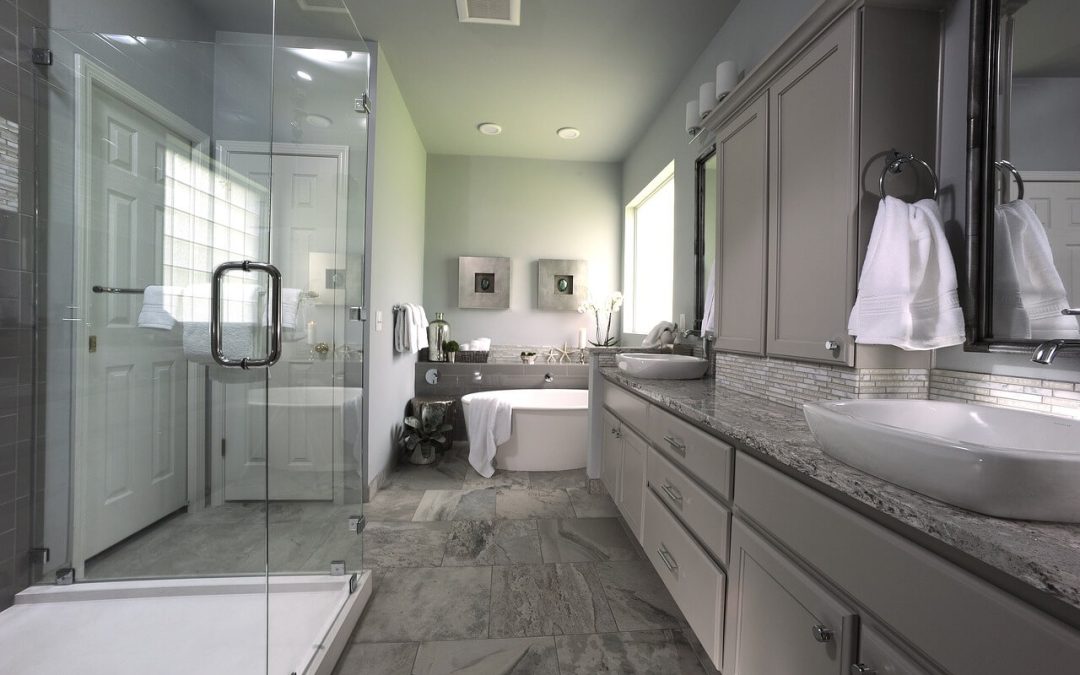When designing or renovating your bathroom, selecting the best flooring material is paramount. Bathrooms endure high moisture levels, foot traffic, and the occasional spill, so durability, functionality, and aesthetics are all crucial. With various options available, from classic tiles to innovative alternatives, let’s explore the diverse range of bathroom flooring materials to help you make the best choice for your space.
1. Ceramic and Porcelain Tile Bathroom Flooring Materials
Tiles are perhaps the most popular choice for bathroom flooring, and for good reason. Ceramic and porcelain tiles are highly durable, water-resistant, and easy to clean. They come in various sizes, shapes, colors, and textures, allowing for endless design possibilities.
2. Natural Stone
For a touch of luxury and timeless elegance, natural stone such as marble, granite, limestone, or slate can elevate the aesthetic of any bathroom. While natural stone is undeniably beautiful, it requires regular sealing to prevent stains and water damage. It’s also worth noting that certain types of stone, like marble, can be prone to etching and scratching, so careful consideration of maintenance needs is essential.
3. Budget Bathroom Flooring Materials: Vinyl
Vinyl flooring has come a long way in terms of aesthetics and durability. Available in a wide array of designs, including realistic wood and stone patterns, vinyl is a budget-friendly option resistant to water, stains, and scratches. It’s comfortable underfoot and relatively easy to install, making it a practical choice for DIY enthusiasts or those on a tight budget.
4. Laminate Flooring
Laminate flooring offers the look of hardwood or stone at a fraction of the cost. It consists of multiple layers, including a high-density fiberboard core and a photographic layer that mimics the appearance of natural materials. While laminate is moisture-resistant and easy to maintain, choosing a product specifically designed for wet areas is essential to prevent warping or water damage.
5. Engineered Wood
If you want the look of hardwood in your bathroom, engineered wood flooring is a viable option. Unlike solid hardwood, engineered wood is constructed with multiple layers for enhanced stability and resistance to moisture. However, it’s crucial to select a product with a waterproof core and adequate sealing to protect against water damage in the bathroom environment.
6. Cork Flooring
Cork flooring is eco-friendly and provides a soft, cushioned feel underfoot. Naturally resistant to mold, mildew, and moisture, cork is a sustainable option that adds warmth and texture to any bathroom. However, it’s essential to seal cork flooring properly to prevent water penetration and maintain longevity.
7. Concrete Bathroom Flooring Materials
For a contemporary and industrial look, concrete flooring offers durability and versatility. With proper sealing and finishing, concrete can withstand moisture and heavy foot traffic while providing a sleek and modern aesthetic. Additionally, concrete flooring can be customized with various colors, textures, and patterns to suit your design preferences.
Selecting the perfect bathroom flooring material requires careful consideration of factors such as durability, maintenance, aesthetics, and budget. Whether you opt for classic tiles, natural stone, or innovative alternatives like vinyl or cork, each option has unique benefits and considerations. By weighing your priorities and consulting with professionals, you can find the ideal flooring solution to create a functional and stylish bathroom that withstands the test of time.
Bathroom Remodel FAQs
How can I budget effectively for my bathroom remodel?
Start by determining your priorities and setting a realistic budget based on your financial situation and the scope of the project. Consider obtaining multiple quotes from contractors, researching the cost of materials, and setting aside a contingency fund for unexpected expenses. It’s also helpful to prioritize essential upgrades and be willing to compromise on less critical elements to stay within budget.
How can I make my bathroom more energy-efficient?
Consider installing water-saving fixtures such as low-flow toilets and aerated faucets, using LED lighting, insulating hot water pipes to reduce heat loss, and investing in energy-efficient appliances like water heaters and exhaust fans.
What are some popular trends in bathroom design?
Popular trends in bathroom design include minimalist and spa-like aesthetics, the use of natural materials such as stone and wood, freestanding tubs, walk-in showers with frameless glass enclosures, and smart technology integration (e.g., motion-sensor faucets, heated floors).
How can I maximize storage space in my bathroom?
Consider adding built-in shelving, installing cabinets or vanities with ample storage capacity, utilizing vertical space with tall cabinets or shelving units, and incorporating space-saving fixtures like wall-mounted toilets or floating vanities.
Checkpoint Home Inspections offers comprehensive inspection services to homebuyers and sellers near the North Coast of Oregon. Contact us to request an appointment.

